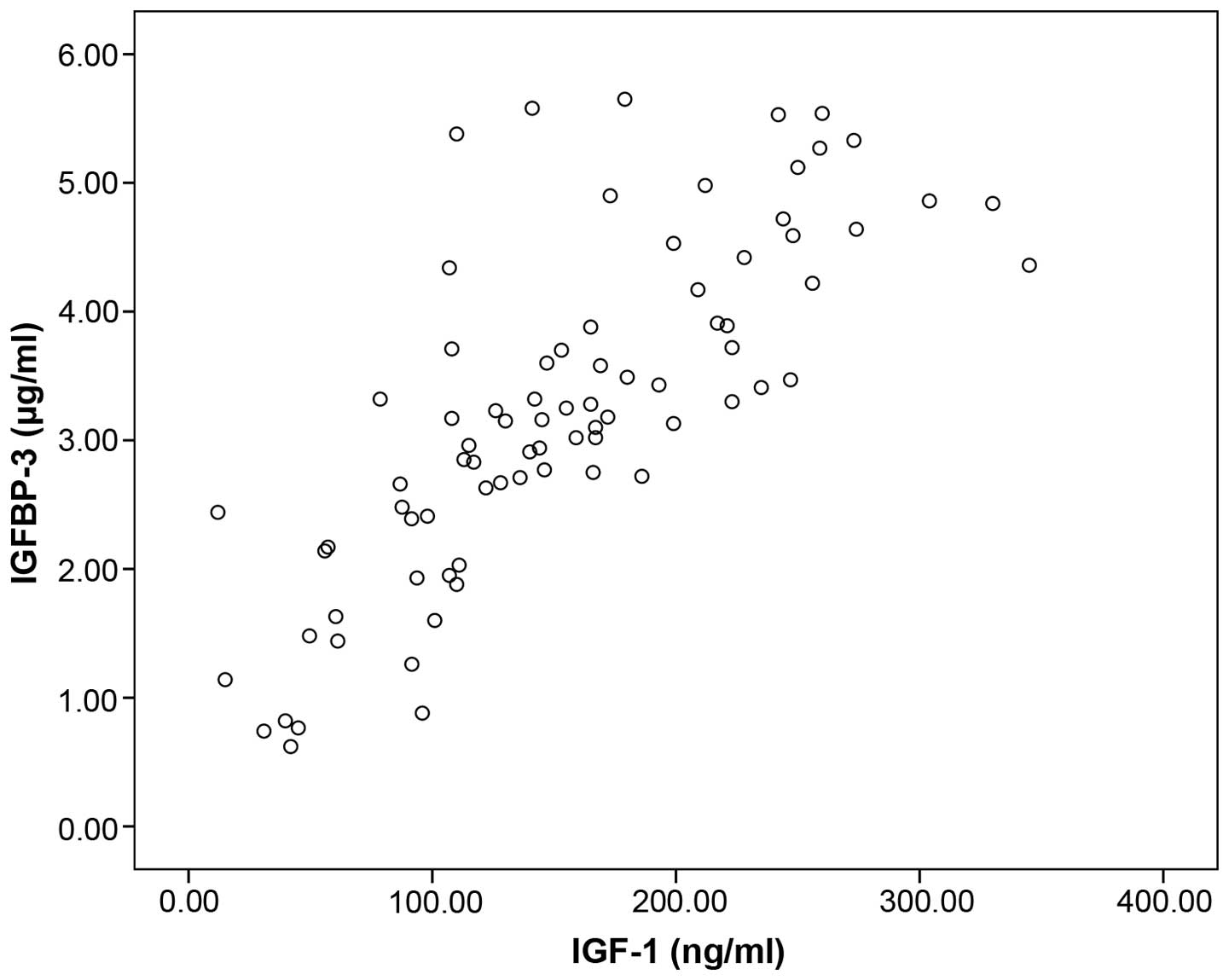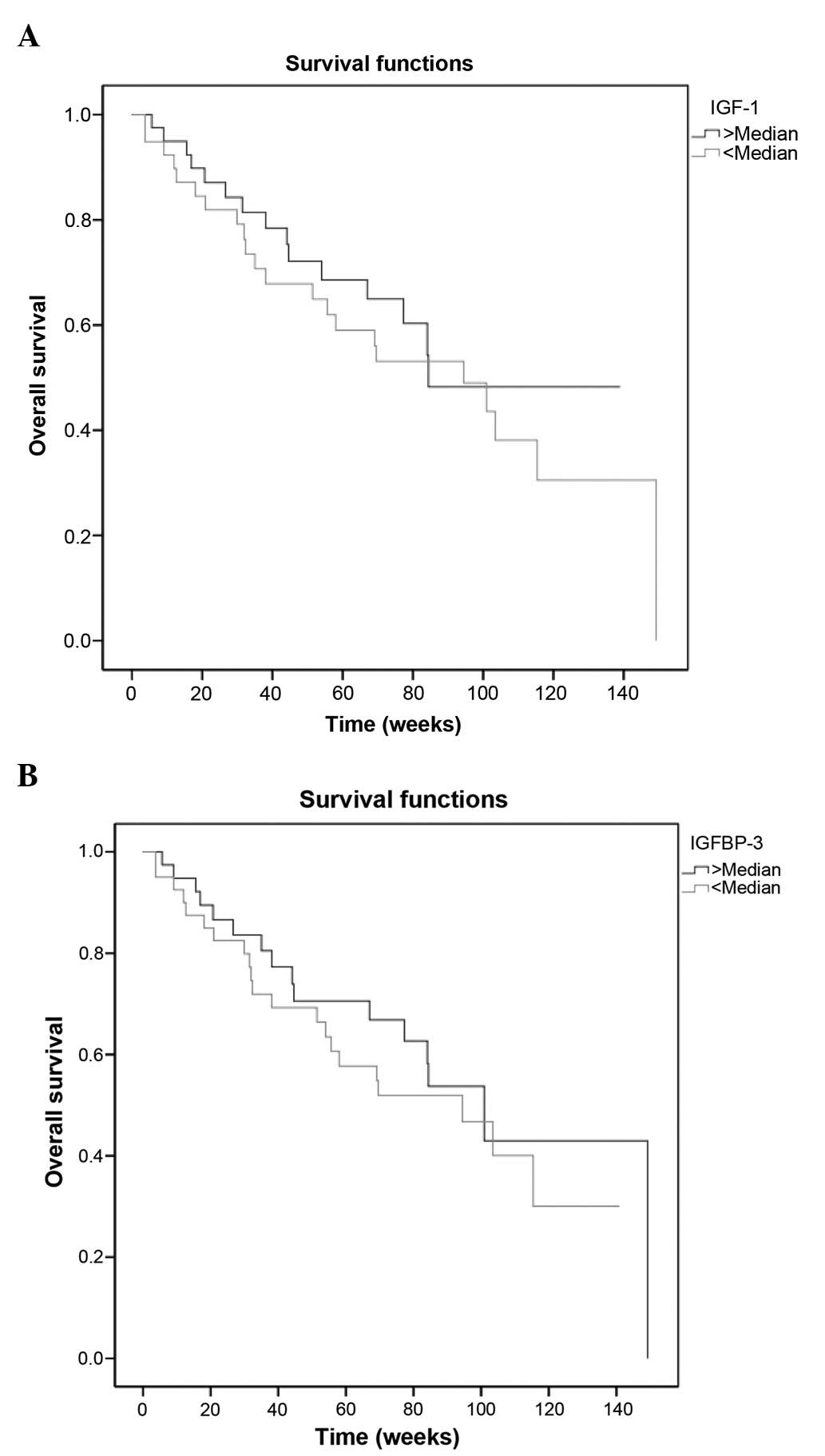Serum IGF-1 and IGFBP-3 levels as clinical markers for patients with lung cancer
- Authors:
- Published online on: March 9, 2016 https://doi.org/10.3892/br.2016.629
- Pages: 609-614
Metrics: Total
Views: 0 (Spandidos Publications: | PMC Statistics: )
Total PDF Downloads: 0 (Spandidos Publications: | PMC Statistics: )
Abstract
Insulin-like growth factor-1 (IGF-1) and its essential binding protein-3 (IGFBP-3) exhibit significant roles in cellular proliferation, differentiation and apoptosis in numerous malignancies, including lung cancer. The aim of the present study was to determine the clinical roles of the serum IGF-1 and IGFBP-3 levels in lung cancer patients. A total of 80 patients with lung cancer were enrolled in the study. Serum IGF-1 and IGFBP-3 concentrations were determined by ELISA methods. The median age of patients was 58.5 years old, with a range of 36-80 years. The majority of the patients had non‑small cell lung cancer (NSCLC) (85%) and metastatic disease (56%). No significant differences were observed in serum IGF‑1 levels between lung cancer patients and healthy subjects (P=0.403). However, baseline serum IGFBP‑3 levels of the lung cancer patients were significantly lower compared to the control group (P<0.001). The male patients had elevated serum IGF‑1 concentrations compared to females (P=0.025). Furthermore, patients with NSCLC histology and metastatic stage in NSCLC had elevated serum IGF‑1 (P=0.022 and P=0.039, respectively) and IGFBP‑3 (P=0.005 and P=0.043, respectively) levels compared with those with SCLC histology and non‑metastatic stage in NSCLC. However, none of the other clinical variables, including age of patient, tumor histology and chemotherapy responsiveness, were observed as correlated with serum assays of IGF-1 and IGFBP-3 (P>0.05). There was a significant association found between IGF-1 and IGFBP-3 serum levels in lung cancer patients (P<0.001). Neither serum IGF‑1 nor IGFBP-3 concentrations were associated with outcome (P=0.552 and P=0.471, respectively). In conclusion, serum concentrations of IGFBP‑3 may have a diagnostic predictor in patients with lung cancer compared to serum IGF‑1 concentrations. However, predictive and prognostic values of the two serum assays were not observed.












